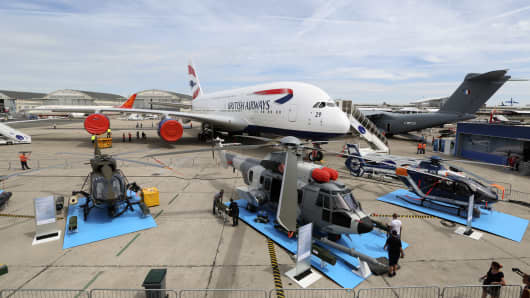As the Paris Air Show gets under way, Accenture has already noticed that change is in the air for the week ahead in Le Bourget.
Four stories in particular clearly underscore the significant changes taking place within the aviation industry.
One: 50th Anniversary and beyond
This year's Paris Air Show will differ from previous ones in three ways.
First, the Asian aerospace and defence industry is growing faster than the more established United States and United Kingdom markets. During the next several years, commercial air traffic growth in Asia will be the key driver of overall market growth. As such, more exhibitors and attendees will be from Asian countries, particularly China, India and Korea, than previous Paris Air Shows.
Second, this year's event will focus more on collaboration as opposed to previous years. The trend at this event previously has been for companies to often make new product announcements as standalone entities. This year will be much more about interdependence and companies coming together as teams. The number of companies that attempt to succeed as islands unto themselves is shrinking, and this will be noticeable at the event.
(Read More: The Unpredictability of the Paris Air Show)
Third, at previous Paris Shows the emphasis has primarily been on hardware and manufacturing. This year's event will be more about services and software. This event will focus more on providing engaging customer experiences with better software and services.
Two: Fluctuating dynamics in emerging and developed countries
The Paris Air Show 2013 will shine a spotlight on the momentum, or lack thereof, among companies in emerging versus development countries. The latest competitive threats and business opportunities in Asia and the Middle East will be important stories to track. Commercial air traffic growth in these two regions has outpaced other global regions and will continue to drive global demand. Governments of China, Japan and India have continued their commitments to build aerospace and defense capabilities and skills. China, for example, is developing and certifying regional and wide-body commercial aircraft.
(Read More: Dogfight over Paris: Airbus and Boeing Battle for Supremacy)
Elsewhere, companies from Dubai, Malaysia and Indonesia are also gaining market momentum and this will be more apparent at the show. Market growth among industry players from Brazil and Russia has continued in recent years. They will likely have a more prominent presence than previous years. By contrast, during the past year the U.S. and U.K. aerospace and defense markets have been relatively slow. Expect fewer news announcements than in previous Paris Air Shows from companies from these developed nations.




